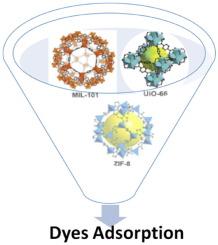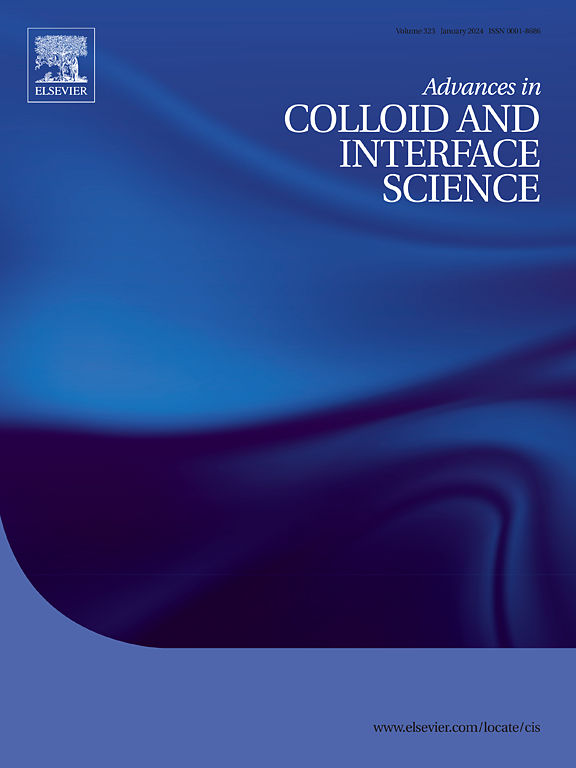Dye remediation potentials of MIL, UiO and ZIF metal-organic frameworks and derivatives in wastewater treatment
IF 19.3
1区 化学
Q1 CHEMISTRY, PHYSICAL
引用次数: 0
Abstract
The uncontrolled discharges of dye effluents into water bodies due to several anthropogenic activities are alarming, necessitating the development and deployment of an effective and environmentally friendly water/wastewater remediation strategy. MILs, UiOs, and ZIFs are fascinating metal-organic frameworks (MOFs) that consist of distinctive components essential for the development of crystals with remarkable surface areas, porosity, outstanding stability, and other adjustable properties. This study presents a comprehensive assessment of the performance of MILs, UiOs, and ZIFs as sorbents for effective dye adsorption from water/wastewater. The suitability of MOF classes for dye decontamination was examined, along with their porosity, ligands, and the parameters influencing their stability. The discussion included different synthetic methods used by MILs, UiOs, and ZIFs, along with their respective advantages and disadvantages. This was also supplemented with the shaping of MOFs. Unlike previous studies, a comprehensive analysis was conducted to evaluate the performance of three MOFs - MILs, UiOs, and ZIFs for the adsorption of dyes from wastewater treatment. The study examined their effectiveness as sorbents for adsorptive dye uptake and addressed their potential uniqueness in detail, providing a current overview of the field. The exceptional performance obtained offers a chance to uncover practical uses in real-world scenarios and acquire an understanding of the associated mechanisms and synergistic relationships. The study further recognized the practical limitations/shortcomings and pinpointed advantageous solutions with these innovative categories of MOFs. To further the practicability and effectiveness of MILs, UiOs, and ZIFs, we highlighted various enhancement choices and knowledge gaps to direct specific future research exploration in expanding their uses on an industrial scale.

MIL、UiO和ZIF金属有机骨架及其衍生物在废水处理中的染料修复潜力
由于一些人为活动,染料废水不受控制地排放到水体中,这是令人震惊的,需要制定和部署有效和环境友好的水/废水补救战略。mil, uio和zif是令人着迷的金属有机框架(mof),它们由独特的成分组成,对于具有显着的表面积,孔隙率,出色的稳定性和其他可调性能的晶体的发展至关重要。本研究全面评估了mil、UiOs和zif作为水/废水中染料的有效吸附性能。考察了MOF类对染料去污的适用性,以及它们的孔隙度、配体和影响它们稳定性的参数。讨论了mil、uio和zif使用的不同合成方法,以及它们各自的优缺点。这也补充了MOFs的形成。与以往的研究不同,本研究对三种mof - mil、UiOs和zif的吸附性能进行了综合分析。该研究考察了它们作为吸附剂对染料吸附的有效性,并详细阐述了它们潜在的独特性,提供了该领域的当前概述。所获得的卓越性能为揭示现实场景中的实际应用提供了机会,并获得了对相关机制和协同关系的理解。该研究进一步认识到实际的局限性/缺点,并指出了这些创新MOFs类别的优势解决方案。为了进一步提高mil、uio和zif的实用性和有效性,我们强调了各种增强选择和知识差距,以指导未来具体的研究探索,以扩大其在工业规模上的应用。
本文章由计算机程序翻译,如有差异,请以英文原文为准。
求助全文
约1分钟内获得全文
求助全文
来源期刊
CiteScore
28.50
自引率
2.60%
发文量
175
审稿时长
31 days
期刊介绍:
"Advances in Colloid and Interface Science" is an international journal that focuses on experimental and theoretical developments in interfacial and colloidal phenomena. The journal covers a wide range of disciplines including biology, chemistry, physics, and technology.
The journal accepts review articles on any topic within the scope of colloid and interface science. These articles should provide an in-depth analysis of the subject matter, offering a critical review of the current state of the field. The author's informed opinion on the topic should also be included. The manuscript should compare and contrast ideas found in the reviewed literature and address the limitations of these ideas.
Typically, the articles published in this journal are written by recognized experts in the field.

 求助内容:
求助内容: 应助结果提醒方式:
应助结果提醒方式:


